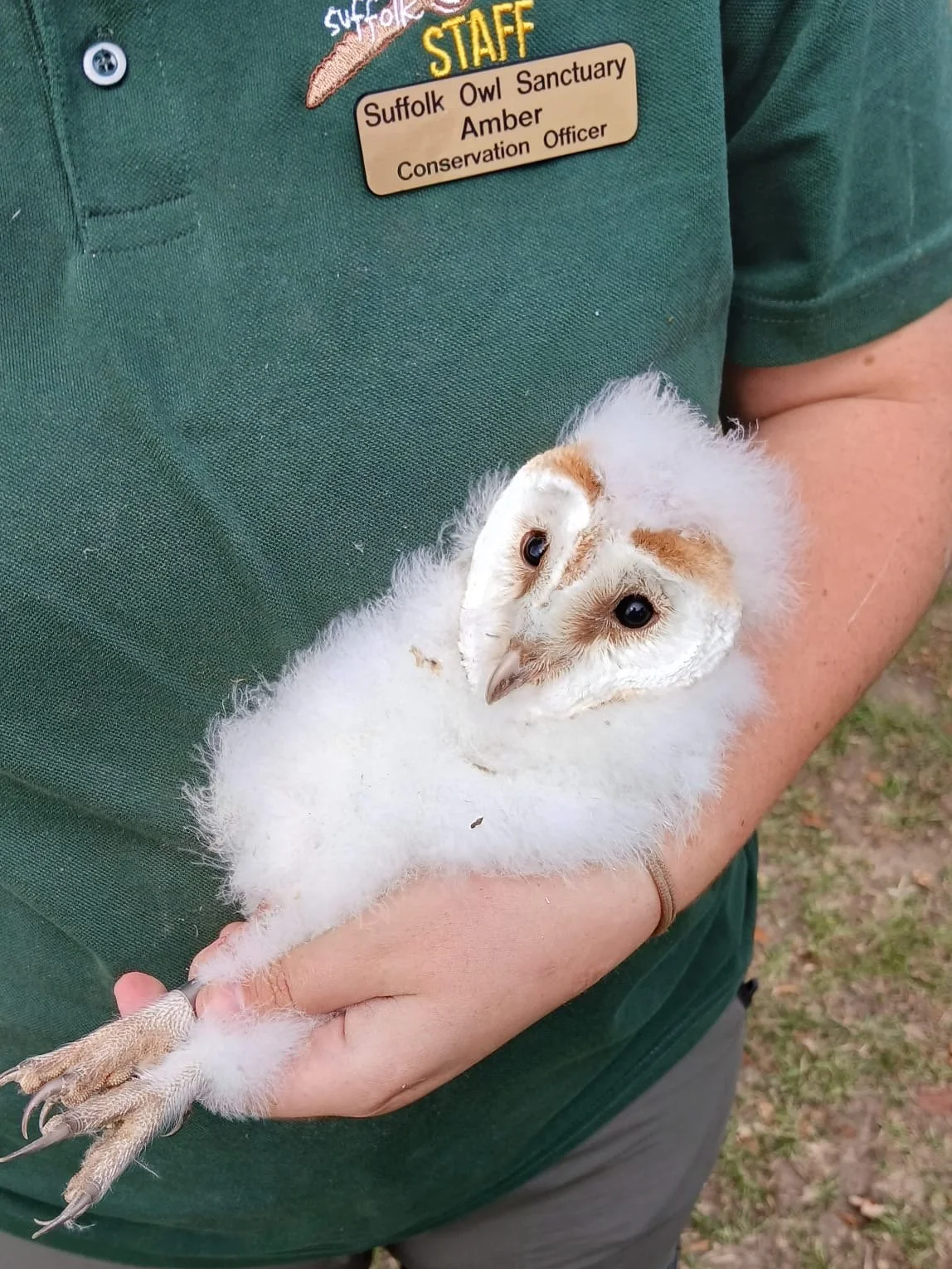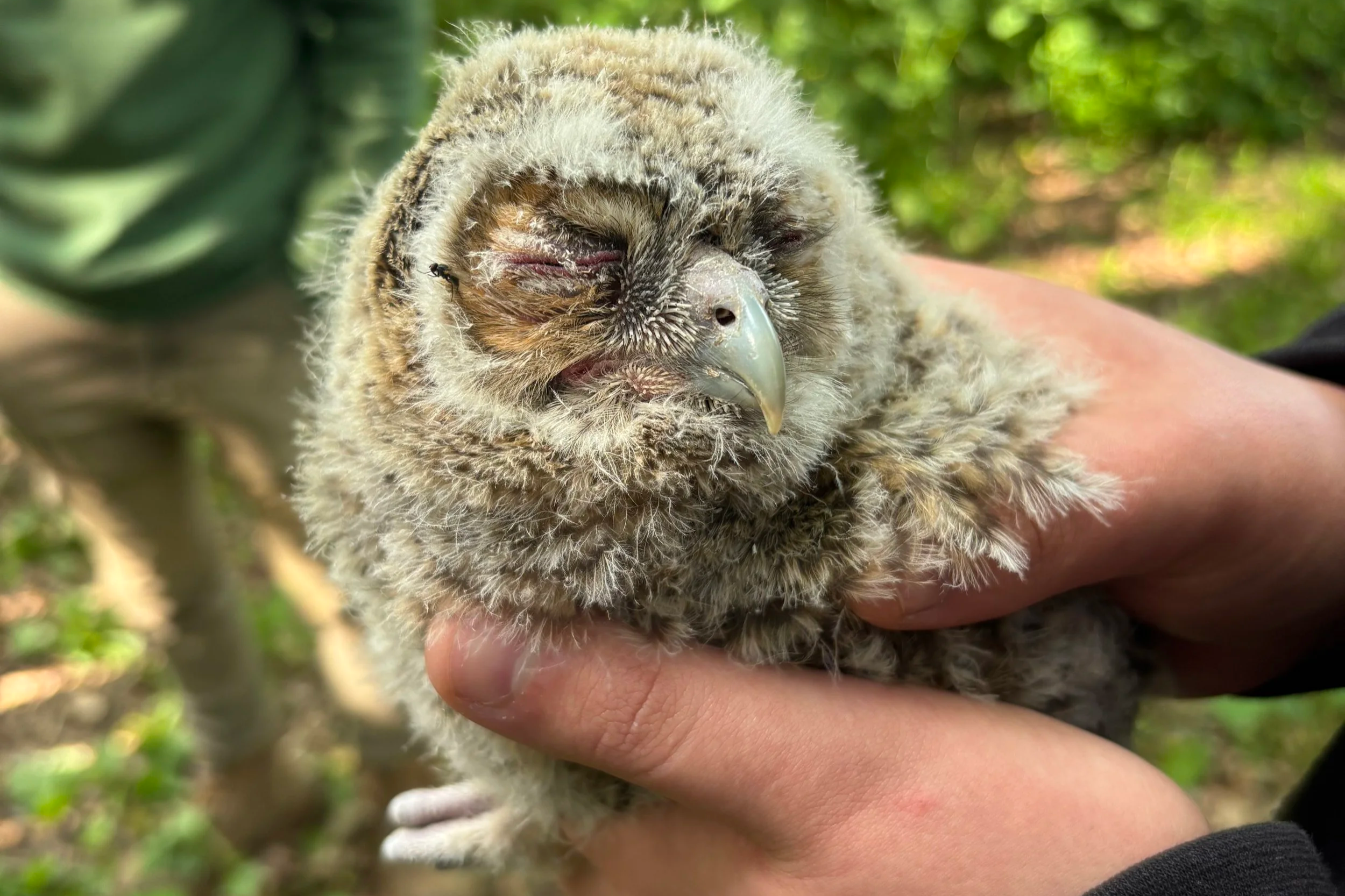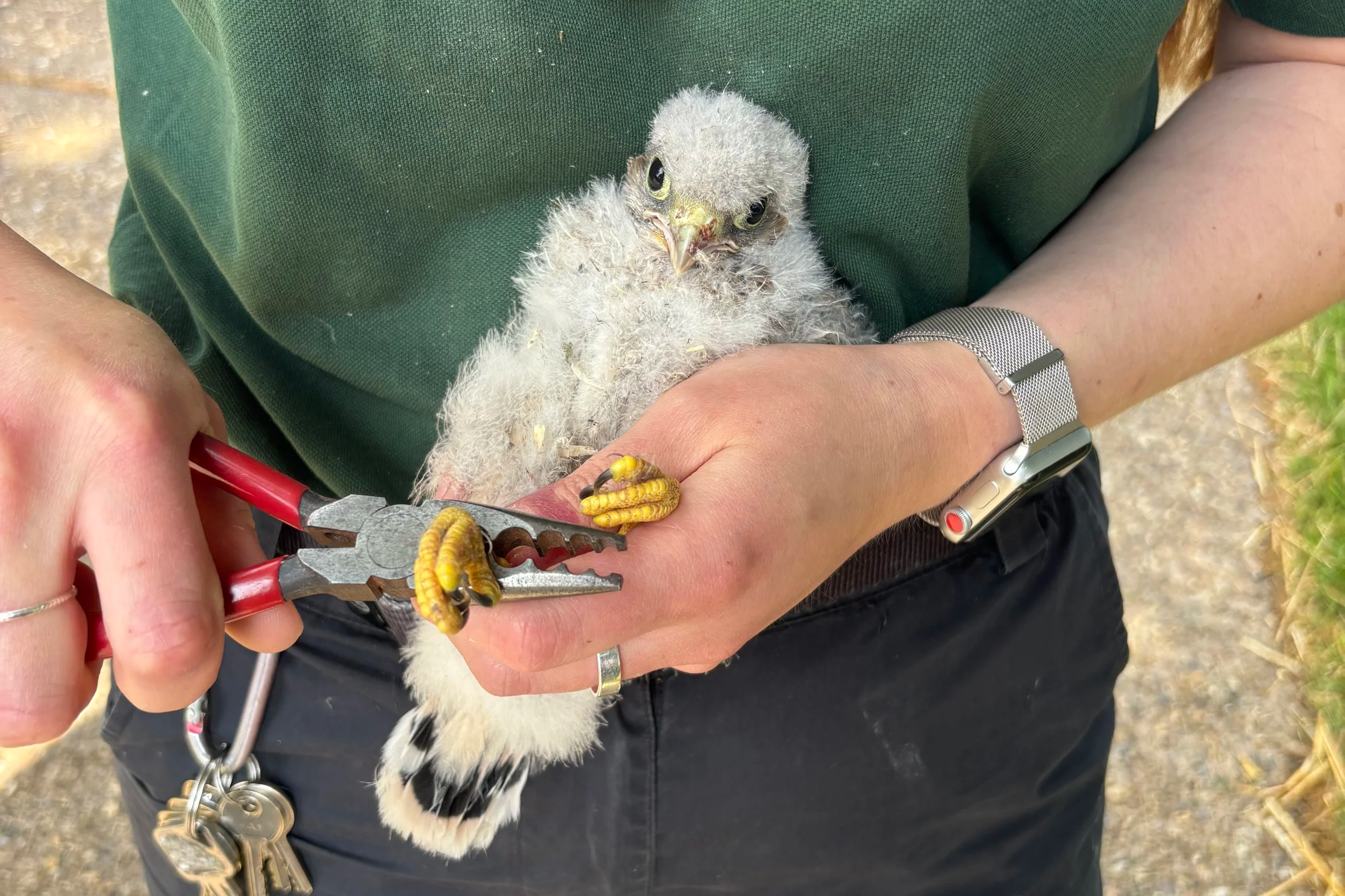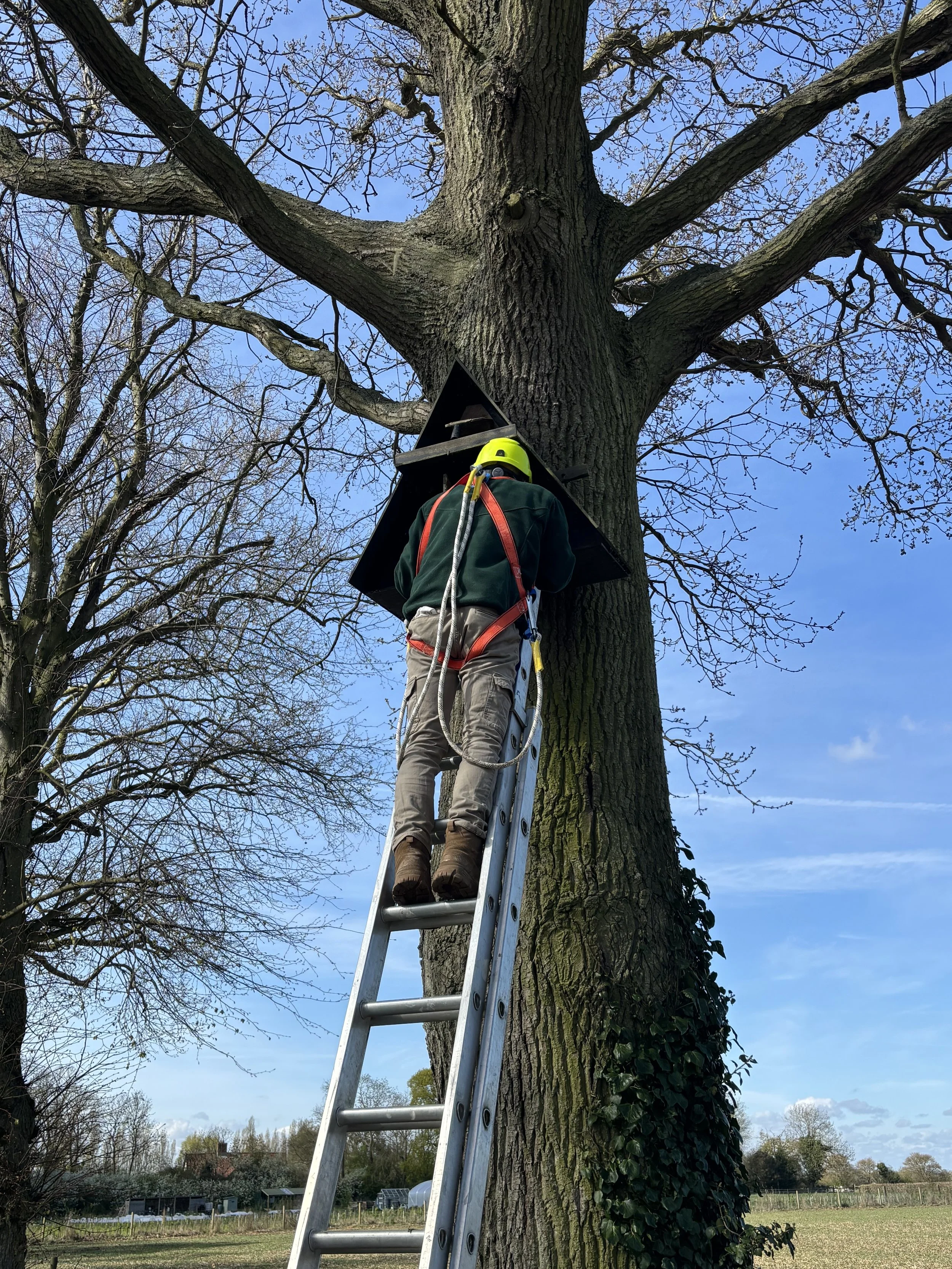At the Suffolk Owl Sanctuary, we operate the Wild Owl Nest Box Scheme, which provides safe and secure nesting sites for Barn Owls, Tawny Owls, Little Owls, and Kestrels. Our team regularly monitors these boxes and works with a licensed bird ringer & trainer, to ring both adult birds and their young, contributing valuable data to national monitoring efforts.
Each species has distinct breeding habits and habitat preferences:
Barn Owls typically breed from March to August, favouring open habitats such as farmland.
Tawny Owls breed from late winter to spring, preferring broad-leaved and deciduous woodlands.
Little Owls breed from March to August in open landscapes, including farmland, parkland, and orchards.
Kestrels breed from March to September, utilising open areas where cavities are available for nesting.
Unfortunately, this year has proven to be a challenging one for breeding success in the boxes that we monitor. We recorded only one successful brood each for Barn Owls, Kestrels, and Tawny Owls.
Several environmental factors may explain this poor outcome. A shortage of prey, particularly short-tailed field voles, led to reduced food availability. The dry spring limited grass growth, which in turn diminished food sources for voles and other small mammals. As a result, owls struggled to find sufficient prey. This meant they were not able to reach breeding weight. For those that managed to breed, there was a lack of food to sustain themselves and their young.
Compounding the issue, a wet winter followed by a dry spring created unfavourable conditions for these species. Wet weather limits hunting for Barn Owls, whose feathers are not waterproof, while subsequent dry conditions further reduced prey numbers. Some reports from across the country indicate that Tawny and Barn Owls had a very poor breeding season..
We have also observed fewer admissions of nestlings to our Raptor Hospital, where we rescue and rehabilitate orphaned or injured birds of prey. This decline likely mirrors the reduced breeding success in the wild, further highlighting the difficult breeding conditions experienced this year.
However, amidst these challenges, we recorded some positive activity from an often-overlooked species - the Stock Dove. This year, four Stock Doves were ringed in our nest boxes, and many more were monitored using the boxes.. Although less well-known than the raptors, their presence is encouraging, particularly given their Amber conservation status and the UK being an international stronghold for the species
As the year draws to a close, our team will be heading out over the winter months to erect more nest boxes and inspect, repair, & maintain our network. Regular maintenance ensures that the boxes remain safe and suitable for breeding, giving our local owl and kestrel populations the best possible start when the next breeding season begins. We remain hopeful that the weather conditions and greater prey availability will support a far more successful season next year.
✍️ Conservation Officer Amber Hanys




